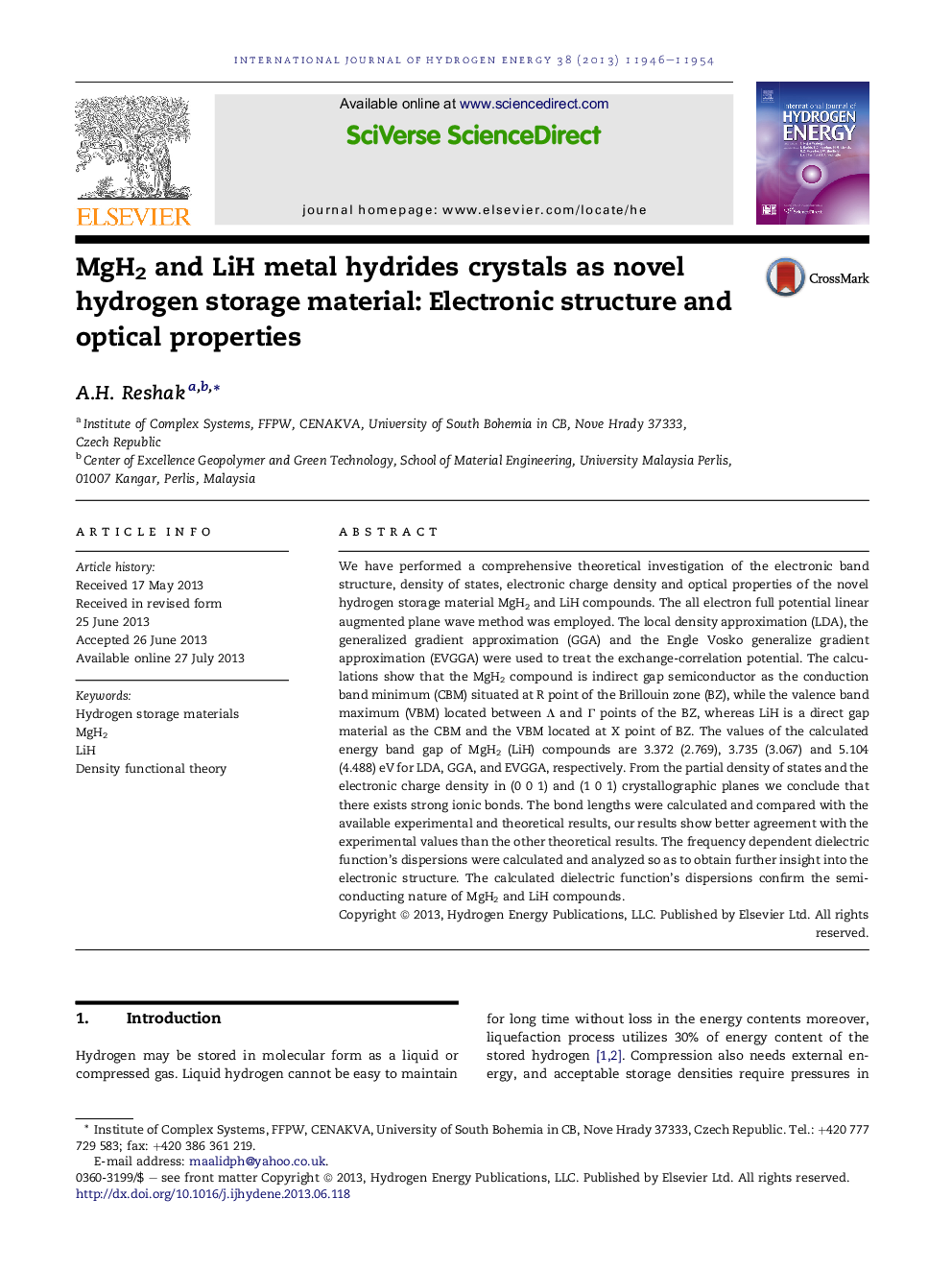| Article ID | Journal | Published Year | Pages | File Type |
|---|---|---|---|---|
| 1274912 | International Journal of Hydrogen Energy | 2013 | 9 Pages |
•The electronic band structure and optical properties for MgH2 and LiH were calculated.•MgH2 compound is indirect gap semiconductor whereas LiH is a direct gap semiconductor.•The optical properties confirm the semiconducting nature of MgH2 and LiH compounds.•Our calculated gap in better agreement with experiment than the previous calculation.
We have performed a comprehensive theoretical investigation of the electronic band structure, density of states, electronic charge density and optical properties of the novel hydrogen storage material MgH2 and LiH compounds. The all electron full potential linear augmented plane wave method was employed. The local density approximation (LDA), the generalized gradient approximation (GGA) and the Engle Vosko generalize gradient approximation (EVGGA) were used to treat the exchange-correlation potential. The calculations show that the MgH2 compound is indirect gap semiconductor as the conduction band minimum (CBM) situated at R point of the Brillouin zone (BZ), while the valence band maximum (VBM) located between Λ and Γ points of the BZ, whereas LiH is a direct gap material as the CBM and the VBM located at X point of BZ. The values of the calculated energy band gap of MgH2 (LiH) compounds are 3.372 (2.769), 3.735 (3.067) and 5.104 (4.488) eV for LDA, GGA, and EVGGA, respectively. From the partial density of states and the electronic charge density in (0 0 1) and (1 0 1) crystallographic planes we conclude that there exists strong ionic bonds. The bond lengths were calculated and compared with the available experimental and theoretical results, our results show better agreement with the experimental values than the other theoretical results. The frequency dependent dielectric function's dispersions were calculated and analyzed so as to obtain further insight into the electronic structure. The calculated dielectric function's dispersions confirm the semiconducting nature of MgH2 and LiH compounds.
